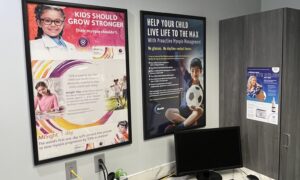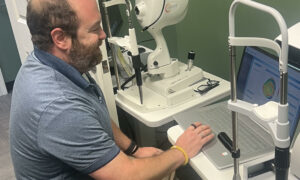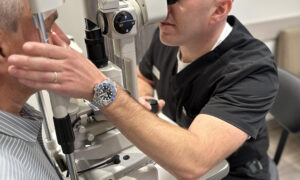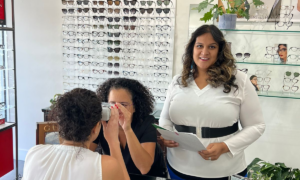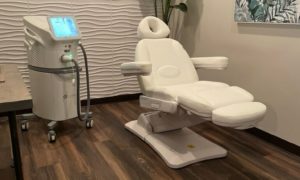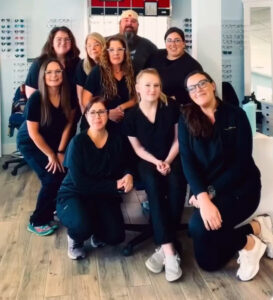
Dr. Perry with her practice team. Dr. Perry says that AI isn’t a turnkey workplace support, but can be prepared, or “trained,” to do what you want it to do.
Pointers for optimizing ChatGPT
By Haley Perry, OD
May 1, 2024
Recently, I had the pleasure of leading a lecture on an exciting topic that’s buzzing in the tech world—artificial intelligence, specifically how ChatGPT can be integrated into our optometric practices.
This isn’t just about automating responses or streamlining e-mails; it’s about revolutionizing how we handle patient charting and more.
Are You All-in on ChatGPT Yet?
The feedback from the lecture was overwhelmingly positive, with many attendees eager to explore ChatGPT’s potential beyond the basics. However, not everyone is sold on the idea just yet.
For instance, my friend Alex Martin, OD, sent me a text after the lecture, bluntly stating: “ChatGPT 4.0 is BS and you sleep on a bed of lies.”
At first, I was taken aback, but then I realized—Alex, like many, fell into a common trap. He expected perfection from the get-go, believing AI would seamlessly understand and execute tasks without a hitch.
ChatGPT is Not a Turnkey Solution
Here’s the thing about using something as sophisticated as ChatGPT in your practice: it requires finesse. It’s crucial to ask good questions—a skill that demands a decent grasp of the subject at hand.
Just tossing a command like, “Turn this voice-to-text conversation into a SOAP note,” without prior training, might yield less-than-satisfactory results.
Use this template when interacting with ChatGPT:
-
You are [Expert Persona].
-
[Verb] [Format & Length]
-
[Objective].
-
The output should include relevant [Data].
-
The writing style is [Tone of Voice] targeted towards [Audience].
So this might look like: “You are an optometric scribe. Turn this voice to text conversation into a SOAP note. My goal is to be able to copy from this platform into my EHR. The output should not delete any of the pertinent information related to this person’s eyecare. The output should not include relaxed conversations had with this person about other topics that happened in the exam room. The writing style is professional and medical in nature.”
“Training” the ChatGPT
But imagine treating ChatGPT like a new employee, or even a trainee scribe. When it makes a mistake, clarify why it was wrong.
Other Articles to Explore
For example, you could say, “I like this part of what you said, but this other part was said the wrong way.”
This feedback helps it learn and adapt to your specific needs. I’ve used voice-to-text for charting so extensively that ChatGPT now formats almost everything into SOAP notes, even when the questions aren’t patient-related!
It’s also worth noting—while ChatGPT is a powerful tool, it is not HIPAA-compliant. Always de-identify any patient information you use during interactions.
Engage with ChatGPT to Make the Most of It
The biggest takeaway I want to share is this: Engage with ChatGPT as though you’re coaching a friend. Be clear about what you like and what you don’t. The more you interact, the more it learns and the better it assists.
Embracing AI doesn’t mean replacing the human touch in healthcare; it’s about enhancing our capabilities and improving efficiency. Let’s navigate this digital transformation together and make the most of what AI can offer to our field.
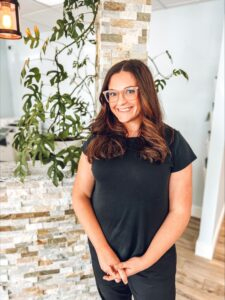 Haley Perry, OD, is the owner of Elite Eye Care, a Vision Source practice, in Arden, N.C. To contact her: haley.a.perry@gmail.com
Haley Perry, OD, is the owner of Elite Eye Care, a Vision Source practice, in Arden, N.C. To contact her: haley.a.perry@gmail.com

